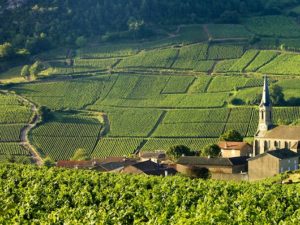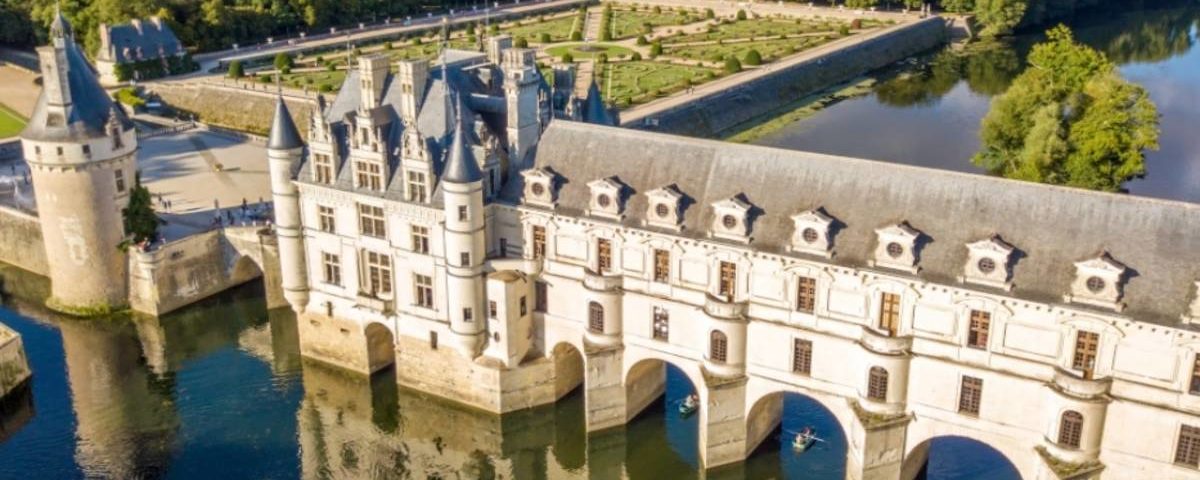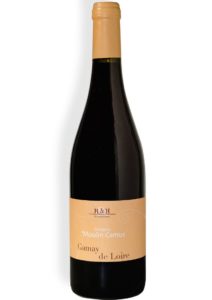By Luisa Welch, AWE
The picturesque Loire Valley region is not only known for its historical castles and abbeys, delicious food and gastronomical specialities, but also for its excellent wines. Located in a special corner of France along the country’s longest river, and part of the UNESCO World Heritage, the Loire Valley is overflowing with an abundance of wine styles, from sparkling to dry, from semi-dry to sweet. This is France’s most diverse wine region, home to a broad array of soils, climates and geographical influences. It is France’s top producers for white wines, second for rosés and third for AOP wines as a whole. (Appellation d’Origine Protégée).
The 57,000 hectares of vineyards are planted beside the long Loire River which stretches along the main regions of Pays Nantais, Anjou, Saumur, Touraine and Centre-Loire – each with its individual soil and microclimate that imparts the wines their distinctive identity. Here, you will find five leading grape varieties, the white Melon de Bourgone (which makes the famous Muscadet wines), the Chenin Blanc and the Sauvignon Blanc; whilst for the reds, Pinot Noir and Cabernet Franc really stand out.

Whether you are already familiar with these wines, or whether this is your first approach, here is a selection to get you tasting something not just exciting, but also great value, and perhaps new to you.
Loire white wines
Touraine is a large and varied wine producing region, stretching from Anjou to the West to Sologne in the East. Here, the Loire River and its tributaries meet, with most of the vineyards located southeast of Tour. It’s here that two excellent wines are made by Domaine des Echardières, starting with Domaine des Echardières Sauvignon Blanc, Touraine 2021. The man behind the winery is Luc Poullin, whose career began, strangely enough, in Bedfordshire where he studied agricultural engineering before, ironically, selling chemicals to the wine industry! Today he manages an estate with an emphasis on environmental sustainability and is a leading advocate of the newly established Touirane-Chenonceaux AOC (Appellation d’Origine Contrôlée).
This classic wine epitomises what a Loire Sauvignon Blanc should be: a flinty nose, a bright gooseberry and citrus fruit palate. Zesty, refreshing and very pleasant. I particularly like the chalky, mineral and leafy finish. It’s so good that it could easily pass off as being from a more illustrious appellation.
Its ‘big brother’ is Touraine-Chenonceaux ‘La Long Bec’ Blanc Domaine des Echardières 2020. The Sauvignon Blanc at the base of this wine is planted on both flint and limestone soils, which impart the wine its fresh and exotic notes. There is white ripe fruit on the nose, quince, and apricot on the palate. A delicious wine with a long finish, and a real all-round winner. At 13.5% abv, this is a wine for food, seafood in particular, or try it with goat’s cheese for an unexpected but very tasty pairing.
Loire red wines
The Loire might spell out ‘white wine’ for many, but the reds produced in the region have carved a niche for themselves, and often delight and surprise when they are tasted.
Take the Cabernet Franc IGP Loire, Domaine du Moulin Camus 2019 for example. Some might call it a ‘house red’, an everyday wine. But there is more to it than meets the eye – or rather – the palate. It’s perhaps unusual to find a fine example of the Cabernet Franc grape planted so far west of the region, where Muscadet dominates. Yet this is exactly what François Boulanger, the winemaker, has done, adding a Cabernet Franc to its range of wines and selecting a schist-based soil that gives the wine a notable gravelly texture, yet manages to retain freshness, fruit and varietal definition. If this was an experiment, well, it has turned out to be a very successful one. This wine has a bit of an attitude: punchy flavours of wild berries and black cherries, leafy tobacco notes and a soft, plush palate. Great at room temperature but even better gently chilled – the perfect accompaniment to charcuterie.
Boulanger’s new and experimental ideas in winemaking treat us to another surprise. Here we have a Gamay IGP Loire, Domaine Moulin Camus 2019. Like its sibling the Cabernet Franc, this grape, synonymous with Beaujolais, should not be grown here! But it is. And very successfully too, on schist soil. The result is dense morello cherries and Victoria plum flavours, a juicy palate but none of the acidity you find in less expensive Gamays. Fresh and juicy, this wine is made to be enjoyed with a BBQ but is equally satisfying slightly chilled at any time.
Continuing our journey of discovery along the Loire River, we come across the Saumur-Champigny appellation in the heart of the Loire Valley. It encompasses 1500 hectares of vineyards and here, the Cabernet Franc grape is in its own element. In general, the wines have a crisp acidity and vibrant fruit flavours, thanks to a very special sub-soil called ‘tuffeau’ – a type of limestone typical of the Loire. Notably, the Saumur-Champigny appellation can only be used for red wine production, so when you find a wine like Domaine de Rocheville, Saumur-Champigny ‘Le Page’ 2018, you want to stop and take notice. From one of the newest and most up-and-coming estates in the area, the winery was established in 2004 by Philippe and Agnès Porché. Previously run as a cooperative, the winery now boasts state-of-the-art wine making facilities. ‘Le Page’ is an outstanding Loire red. Dry, medium bodied, with lots of black fruit, cherry and cedar notes and fine tannins. With a touch of spice on the finish, the wine is fruit forward, it is not oaked and retains its fresh elegance.
The eminent wine critic Michael Broadbent once said: ‘Drinking good wine with good food in good company is one of life’s most civilised pleasures’ – find your own civilised pleasure at winetrust.co.uk






